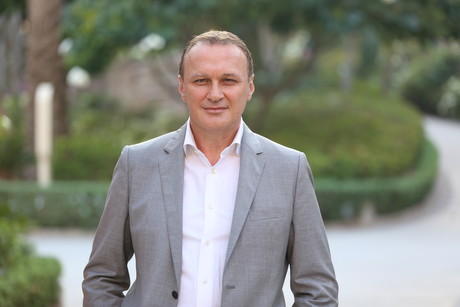Building the digital future of Australia's emergency services

We have a long way to go to reach the digitally powered future that pop culture like Black Mirror depicts. But so long as the government works proactively with the private sector, we will be able to ensure the continued integration of technology into day-to-day life to positively transform into so-called ‘smart cities’.
Imagine a scenario where emergency services are deployed to a car accident before a 000 call is even placed. The paramedics dispatched to the incident have detailed information about how many people are involved and what potential injuries they have sustained before arrival. And the doctors in the hospital have full visibility into patients’ conditions as they’re being transported, accelerating the handover and increasing the likelihood of successful treatment.
This isn’t a wish list — it’s already possible. There are currently several projects in Australia and abroad in which government departments have combined with technology companies to deliver similar outcomes.
From 2018, the European Union will formally launch eCall, an initiative whereby all new, type-approved cars sold in member nations will include an emergency button so that drivers can make near-instant ‘112’ contact — 112 being Europe’s 000. The button sends data from the in-vehicle system (IVS) to the public-safety answering point (PSAP), which receives the ‘minimum set of data’ (MSD). This will help emergency services personnel reach an incident much faster, respond appropriately and ultimately save more lives.
Meanwhile in Australia we have smart projects inside organisations such as healthcare institutions that are implementing comprehensive communications systems to optimise workflows and subsequently improve treatments. As these projects reach full deployment in the next few years, we’ll see hospitals creating dynamic teams with devices that package critical data to enable a streamlined experience for patients and staff. Telematics from ambulances will feed diagnostics directly to doctors, who will have visibility into monitors to suggest on-the-go treatments. Meanwhile, automation will ensure testing data (such as blood tests, scans and so on) are fed quickly to surgeons, with real-time notifications providing critical updates inside operating studios.
These scenarios demonstrate the integration of various types of technologies — and the willingness of users to incorporate them into day-to-day life. While these examples paint a positive outlook for public safety and emergency services, they only scratch the surface when it comes to the potential transformation impact technologies can and will have on the sector.
The likes of artificial intelligence are only just starting to move beyond evaluation to fruition inside a limited number of leading emergency-services bodies. Automation is becoming more widespread, with biometrics following closely behind as interpretation capabilities constantly improve.
So what can we expect in the next five to 10 years? We will see comprehensive sensors in cars, smartwatches and clothing to enable near-instant assessment and diagnosis. We’ll also see elaborate comms devices with the ability to aid bystanders in administering first instance care. That’s just the beginning.
However, to reach these heights of advancement, there needs to be continued change from government. As a nation we’re on the right path, but we need to move more quickly to appropriate our leadership. There’s plenty of work to be done to allow Australians to capitalise on the benefits of technology, particularly with the increasing traction of artificial intelligence (AI) and analytics that is developing.
That starts with ensuring that technology is a priority, not just an added extra. It needs to be implemented in a way that it will improve human interaction, not replace or hinder it; this will be the cornerstone of eliminating challenges around adoption from users and suppliers.
How the Australian Government can boost cybersecurity awareness
With the right messaging, the Australian Government has an opportunity to foster a...
Protecting the infrastructure behind Australia's AI ambitions
AI will shape Australia's future economy and its public institutions, but that future depends...
Why Australian state governments need stronger cyber defence
By breaking down silos, harnessing AI responsibly and securing cloud environments, state...




